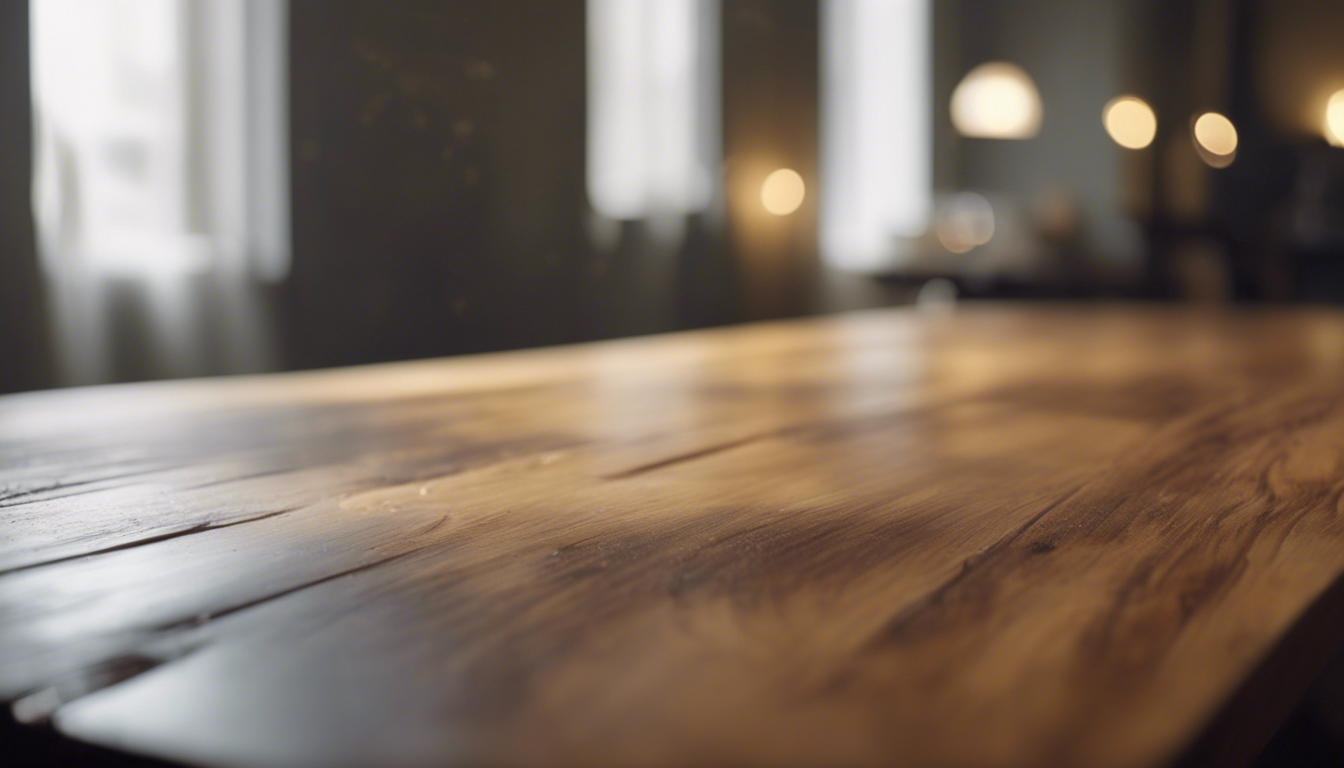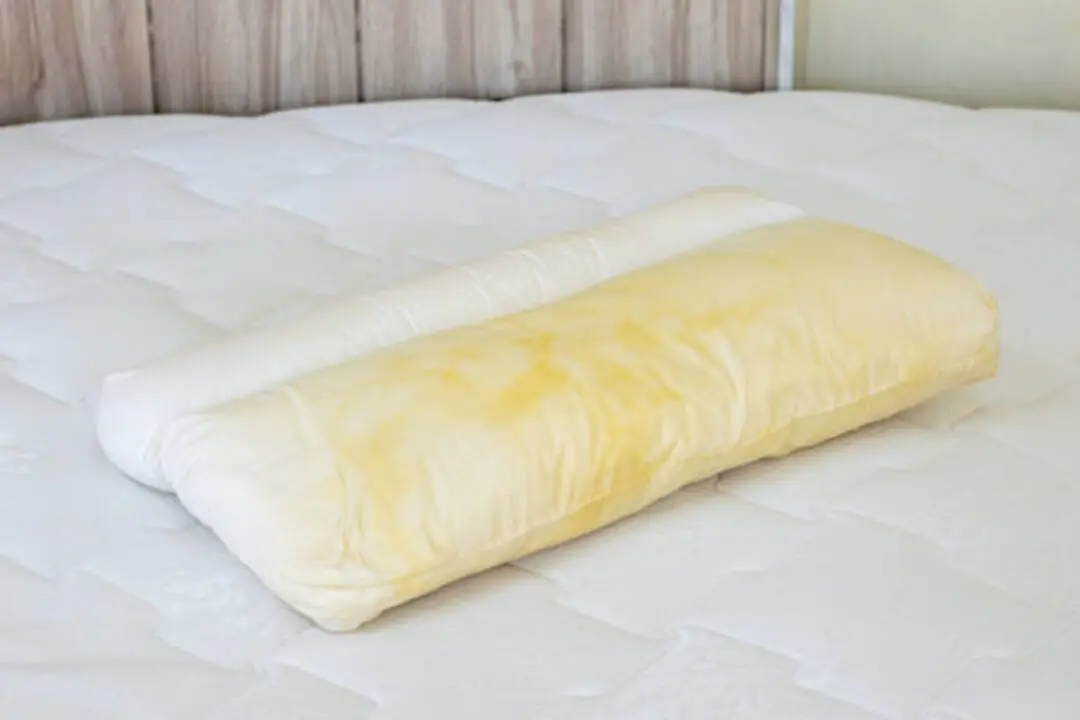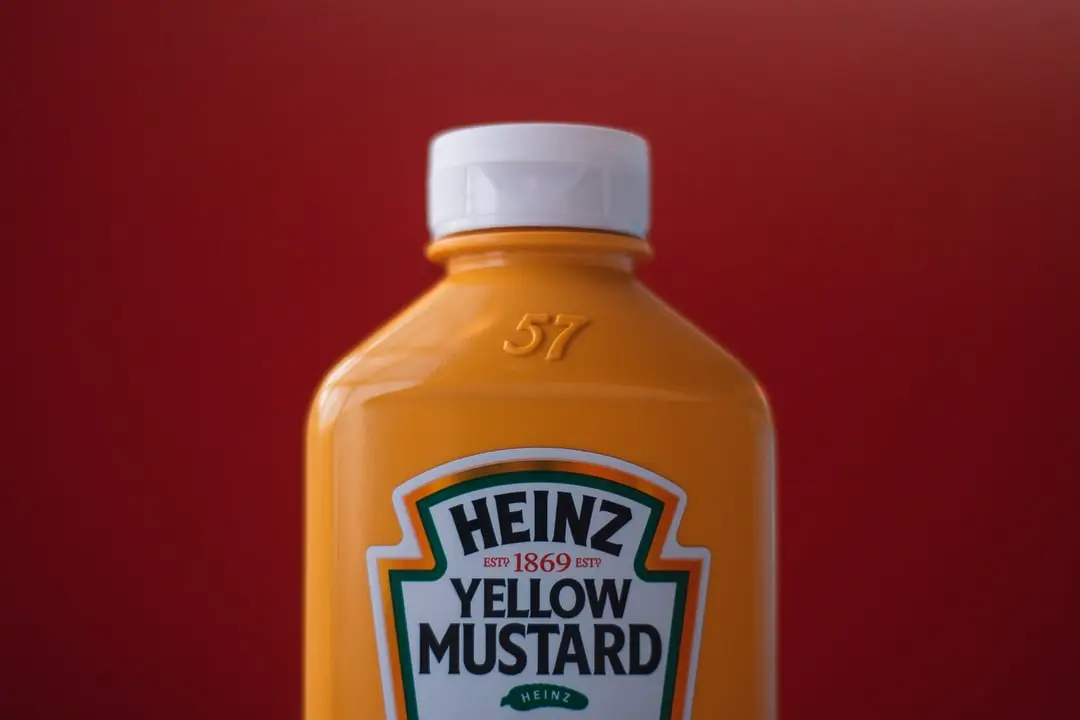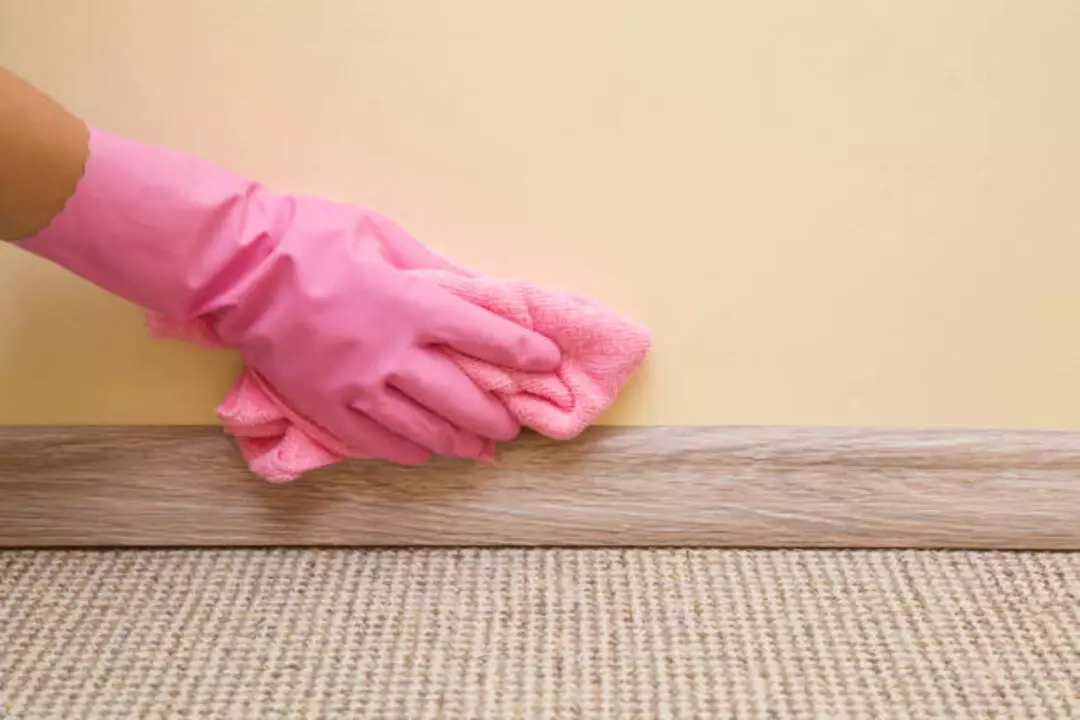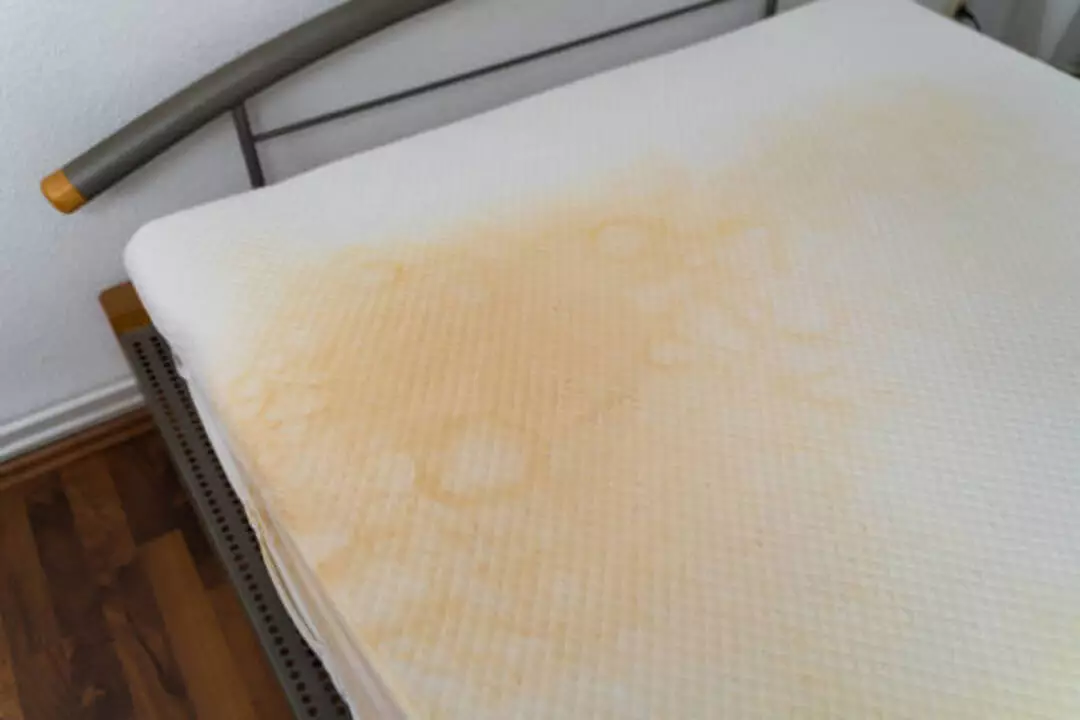Grease can penetrate different types of wood, causing unsightly marks that prove a nightmare to clean.
This blog post is here to change that; it’s packed full of effective techniques and crucial tips for removing stubborn grease stains from any wooden surface. Dive right in, and discover how to restore your beloved wood back to its original spotless state!
Key Takeaways
- Grease stains on wood can come from various sources like cooking oils, butter, or oily fingerprints and can be difficult to remove.
- To remove grease stains from wood, blot the stain with a clean cloth or paper towel and use household solutions like dish soap or baking soda.
- Consider factors such as the type of wood and finish, age and severity of the stain, and potential damage to the wood when removing grease stains.
- Prevent grease stains on wood by practicing proper cleaning and maintenance techniques, using protective measures such as mats or coasters, and choosing durable woods for high-traffic areas.
Understanding Grease Stains on Wood
Grease stains on wood can come from various sources like cooking oils, butter, or even oily fingerprints. The challenge with grease stains is that they can penetrate the surface of different types of wood, leaving behind stubborn marks that are difficult to remove.
Common sources of grease stains on wood
Grease stains on wood come from many places. They can start in the kitchen, where oil and food splatters land on wooden tables or chairs. Butter and other dairy products can also leave marks on your wood.
In living rooms, grease stains show up when oily hair or skin touches wood furniture. If you put lotion-soaked hands on a wooden table, it might stain too. Tools with oil can stain if they touch a workbench or shelf made of wood.
So these are some common ways that grease ends up staining our beloved wooden items!
How grease stains can penetrate different types of wood
Different types of wood have varying levels of absorbency, which means that grease stains can penetrate deeper into some woods than others. Hardwoods like oak or maple are less porous and may not absorb as much grease compared to softwoods like pine or cedar.
The age and condition of the wood can also affect how deeply the stain penetrates. It’s important to consider these factors when trying to remove a grease stain from wood, as certain methods or products may be more effective for specific types of wood.
Methods for Removing Grease Stains from Wood
To remove grease stains from wood, start by blotting the stain with a clean cloth or paper towel to absorb as much grease as possible.
Blotting and using household solutions
To remove grease stains from wood, start by blotting the stain with a clean cloth or paper towel to soak up any excess oil. Avoid rubbing the stain, as this can spread it further into the wood.
Next, try using household solutions like dish soap or baking soda to tackle the stain. Mix a small amount of liquid dish soap with warm water and gently scrub the stained area in circular motions.
Rinse with clean water and dry thoroughly. Alternatively, make a paste with baking soda and water, apply it to the stain, let it sit for a while, then wipe it off. These simple household solutions can help lift and remove grease stains from wood surfaces effectively.
Commercial cleaners and stain removers
To remove grease stains from wood, you can also consider using commercial cleaners and stain removers. There are many products available that are specifically designed to tackle tough stains on wood surfaces.
Look for a cleaner or stain remover that is safe for use on wood and follow the instructions provided by the manufacturer. These products often contain powerful ingredients that can penetrate deep into the wood to break down and lift away stubborn grease stains.
Just remember to test the product on a small, inconspicuous area of the wood first to ensure it doesn’t cause any damage or discoloration.
Techniques for tougher stains
Removing tougher grease stains from wood may require more intensive techniques. One method is to use a mixture of baking soda and distilled vinegar or lemon juice to create a paste.
Apply the paste onto the stain, let it sit for some time, and then wipe it off. Another technique involves using an oven cleaner specifically designed for wood surfaces. Spray the cleaner onto the stain, let it penetrate for a few minutes, and then wipe it away.
Remember to always test these methods on a small area before applying them to the entire stained surface.
Factors to Consider When Removing the Stain
When removing the grease stain from wood, it is important to consider factors such as the type of wood and finish, the age and severity of the stain, and potential damage to the wood.
The type of wood and finish
Different types of wood and finishes can have varying levels of resistance to grease stains. Hardwoods like oak or maple are generally more resistant than softwoods like pine or cedar.
The finish on the wood also plays a role – a sealed or varnished surface will be more protected against stains compared to an unfinished or oil-finished surface. It’s important to consider these factors when choosing the appropriate method for removing grease stains from wood, as certain products or techniques may be better suited for specific types of wood and finishes.
Age and severity of the stain
The age and severity of the stain are important factors to consider when removing grease stains from wood. Older stains may be more difficult to remove compared to fresh ones, as they have had more time to set into the wood fibers.
Additionally, severe or deep-set stains may require more aggressive cleaning techniques or specialized products. It is also worth noting that attempting to remove a stain that has been present for a long time or is deeply ingrained in the wood could potentially cause damage to the surface.
Therefore, it’s crucial to assess the age and severity of the stain before deciding on the appropriate method for removal.
Potential damage to the wood
Using the wrong cleaning products or techniques can potentially damage the wood when trying to remove grease stains. Harsh chemicals or abrasive scrubbing can strip off the finish, discolor the wood, or even cause warping and swelling.
It is important to choose gentle cleaners that are safe for wood surfaces and to test them on a small area first. Additionally, excessive moisture or prolonged exposure to liquid can also harm the wood by causing it to warp or rot.
Therefore, it is crucial to be cautious while treating grease stains on wood and take preventive measures to avoid any potential damage.
How to Prevent Grease Stains on Wood
Prevent grease stains on wood by implementing proper cleaning and maintenance techniques, using protective measures, and selecting the right wood furniture for high-traffic areas. Discover effective strategies to keep your wooden surfaces pristine in this blog post.
Proper cleaning and maintenance
To keep wood surfaces looking clean and prevent stains, it’s important to practice proper cleaning and maintenance. Regularly dusting the wood with a soft cloth or vacuuming with a brush attachment can help remove dirt and debris.
For deeper cleaning, use a mild soap mixed with warm water to gently wipe down the surface, being careful not to oversaturate the wood. Avoid using harsh chemical cleaners that can damage the finish.
Applying a protective wax or polish can also help keep wood looking its best and make it easier to clean in the future. Remember to promptly wipe up spills and avoid placing items directly on the wood without coasters or mats to prevent potential staining.
Using protective measures
To prevent grease stains on wood surfaces, it’s important to take some protective measures. First, make sure to promptly wipe up any spills or splatters that may occur. Using mats or coasters underneath items that can cause staining, such as oil bottles or food containers, is also helpful in preventing stains.
Regular cleaning and polishing of the wood surface can further help maintain its condition and protect it from potential stains. Remember to test any new cleaning products or methods on a small hidden area before using them on the entire surface.
By following these preventive steps, you can keep your wood furniture and floors looking clean and stain-free for longer periods of time.
Choosing the right wood furniture for high-traffic areas
When it comes to choosing wood furniture for high-traffic areas, there are a few important factors to consider. First, opt for durable and hard-wearing woods like oak or maple, as they can better withstand the wear and tear of frequent use.
These types of wood are also less likely to show scratches or dents. Additionally, look for furniture with a protective finish such as lacquer or varnish, as this will help protect the wood from spills and stains.
Avoid delicate woods or light-colored finishes that may easily show damage or discoloration. By selecting sturdy materials and finishes, you can ensure that your wood furniture stays looking its best even in busy areas of your home.
Conclusion
Removing grease stains from wood can be done using common household items like vinegar and olive oil. It’s important to consider the type of wood and finish when choosing a stain removal method.
To prevent future stains, wipe up spills quickly and use protective measures. By following these tips, you can keep your wood surfaces clean and free of grease stains.
FAQs
1. What are some methods for removing grease stains from wood?
You can try using dishwashing liquid and vinegar, iron, talcum powder, baking soda, or even oven cleaner to remove grease stains from wood.
2. How can I prevent stains on my wooden furniture?
To prevent stains on wooden surfaces use covers when not in use and avoid placing oily items directly on the wood.
3. Can I use common household items to get rid of oil stains on wood?
Yes! Items like liquid dish soap, vinegar and baking soda often work well for removing oil and grease stain removal.
4. Is it possible to remove wax or dye stains from wooden surfaces too?
Removing wax or dye-based stains is possible! There are specific techniques available like sanding and chemical removers that help with such tough stain removals.
5. Any tips before trying to clean stubborn marks off my wooden table?
Before applying any cleaning solution always test a small spot first as precautions need different materials react differently with cleaners!
6. Will these methods work for removing all types of oil staining incidents?
Most general techniques should work on a variety of fats but remember; each surface might need its own special touch depending upon the kind of finish used originally.
